The Medical Library Association Guide to Providing Consumer and Patient Health Information
Medical Library Association Books
The Medical Library Association (MLA) features books that showcase the expertise of health sciences librarians for other librarians and professionals.
MLA Books are excellent resources for librarians in hospitals, medical research practice, and other settings. These volumes will provide health care professionals and patients with accurate information that can improve outcomes and save lives.
Each book in the series has been overseen editorially since conception by the Medical Library Association Books Panel, composed of MLA members with expertise spanning the breadth of health sciences librarianship.
Medical Library Association Books Panel
Carol Ann Attwood, AHIP, chair
Barbara Gushrowski, chair designate
Gail Y. Hendler
Megan Curran Rosenbloom
Tracy Shields
Kristen L. Young, AHIP
Lauren M. Young, AHIP
Gabriel R. Rios, board liaison
About the Medical Library Association
Founded in 1898, MLA is a 501(c)(3) nonprofit, educational organization of 4,000 individual and institutional members in the health sciences information field that provides lifelong educational opportunities, supports a knowledgebase of health information research, and works with a global network of partners to promote the importance of quality information for improved health to the health care community and the public.
Books in Series
The Medical Library Association Guide to Providing Consumer and Patient Health Information edited by Michele Spatz
Health Sciences Librarianship edited by M. Sandra Wood
The Medical Library Association Guide to Providing Consumer and Patient Health Information
Edited by Michele Spatz
ROWMAN & LITTLEFIELD
Lanham Boulder New York Toronto Plymouth, UK
Published in cooperation with the Medical Library Association
Published by Rowman & Littlefield
4501 Forbes Boulevard, Suite 200, Lanham, Maryland 20706
www.rowman.com
10 Thornbury Road, Plymouth PL6 7PP, United Kingdom
Copyright 2014 by Medical Library Association
All rights reserved . No part of this book may be reproduced in any form or by any electronic or mechanical means, including information storage and retrieval systems, without written permission from the publisher, except by a reviewer who may quote passages in a review.
British Library Cataloguing in Publication Information Available
Library of Congress Cataloging-in-Publication Data
The Medical Library Association guide to providing consumer and patient health information / edited by Michele Spatz.
p. ; cm.(Medical Library Association books)
Guide to providing consumer and patient health information
Includes bibliographical references and index.
ISBN 978-1-4422-3070-5 (cloth : alk. paper)ISBN 978-1-4422-2570-1 (paper : alk. paper)ISBN 978-1-4422-2571-8 (electronic)
I. Spatz, Michele, 1954 editor of compilation. II. Medical Library Association, sponsoring body. III. Title: Guide to providing consumer and patient health information. IV. Series: Medical Library Association books.
[DNLM: 1. Consumer Health Information. 2. Library Services. 3. Patient Education as Topic. WA 590]
RA440.5
362.1dc23 2014003614
 The paper used in this publication meets the minimum requirements of American National Standard for Information SciencesPermanence of Paper for Printed Library Materials, ANSI/NISO Z39.48-1992.
The paper used in this publication meets the minimum requirements of American National Standard for Information SciencesPermanence of Paper for Printed Library Materials, ANSI/NISO Z39.48-1992.
Printed in the United States of America
Preface
E ach day, in the course of their work , countless librarians work with healthcare consumers and patients alike, providing invaluable assistance in locating meaningful health information. For some librarians, this is par for the course. For others, its challenging on many levels: they may be new to the field, lack confidence in their skill set, not know what key resources are available, nor understand how to conduct a reference interview. They may be uncomfortable dealing with someone whose needs are complex or who speaks a different language.
While we learn immensely by doing, a common knowledge base will help us hone our skills more quickly and build our expertise in this important area of librarianship by providing a solid foundation for a knowledgeable and compassionate practice.
Composed of thirteen chapters written by experienced consumer health librarians, this book is designed for library and information science graduate students as well as librarians new to health and medical librarianship, regardless of library setting. It is comprehensive in scope, covering all aspects of consumer and patient health and medical information from their humble, grassroots beginnings to the ever-evolving applications of new technology and social media. In between, the mundane aspects of health and medical librarianship, such as needs assessment, costs, budgeting and funding, and staffing are discussed. Adding richness to this discussion are the coverage of more sensitive topics such as patient-friendly technology, ethical issues in providing consumer and patient health information, meeting the needs of diverse populations, and responding to individuals from various cultural backgrounds. No comprehensive picture of consumer and patient health librarianship would be complete without addressing the critical importance of marketing and strategic partnerships; such discussions round out this volume.
Patients today must be knowledgeable enough to participate in their health and well-being. Shorter hospital stays, changing reimbursement patterns, and the gradual shift towards focusing on proactively maintaining health and managing disease require patients to be informed and actively engaged. Education, information, and understanding are important components of actively engaged patients. Correspondingly, in todays e-world, there is a glut of information resources available through the Internetfrom YouTube videos to Googling to blogs and Twitter feeds. What is lacking in these information-rich times is the relevance of meaning and context for those who ask, Does this health and medical information apply to me and my unique clinical picture? or How do I use this information? As knowledge navigators, information technology wizards, and content experts, librarians offer focused responses to individuals specific and highly personal health and medical information queries. In a new healthcare world order of optimizing health and minimizing hospitalizations, such a service is invaluable.
Sadly, there still exists in our highly networked and technological age an information gap for those who struggle in obtaining meaningful health or medical information. These individuals may be foreign-born, non-English speaking, poor, rural, aged, or semi-literate. Whatever their status, librarians must have the wherewithal to find germane resources and also help create responsive mechanisms to bridge that health information gap for vulnerable citizens.
When all is said and done, librarians form relationships with others. All of our savvy tech skills and ability to organize and assimilate complex information are for naught if we are not connected with otherseither virtually or face-to-face. Humanity is the common currency that enriches our work. By bringing our unique skills to bear in our relationships to patients and healthcare consumers, we assist real people in acquiring information, resources, and materials with which to better understand their health, make decisions, or spark a dialogue with their healthcare provider. In service to others, we strive to achieve our professions noble purpose.
The Medical Library Associations Policy Statement, The Librarians Role in the Provision of Consumer Health Information and Patient Education (http://caphis.mlanet.org/chis/librarian.html [accessed October 23, 2012]) identifies six important responsibilities for todays consumer health librarians: collection management, knowledge and resource sharing, advocacy, access and dissemination of information, education, and research. To that end, may this book help provide a foundation, a humble beginning if you will, upon which to build an enduring approach to the practice of consumer and patient librarianship.
Next page
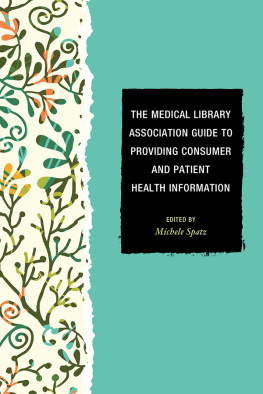
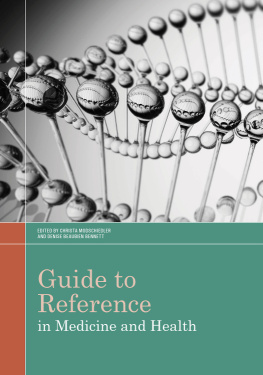
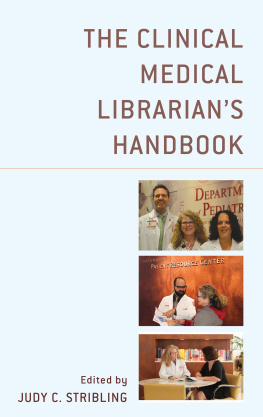
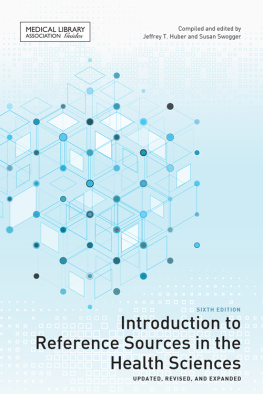
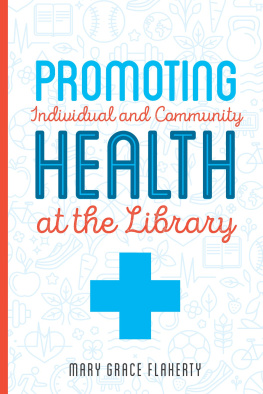



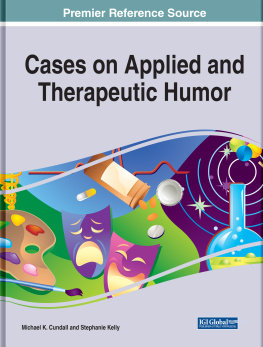
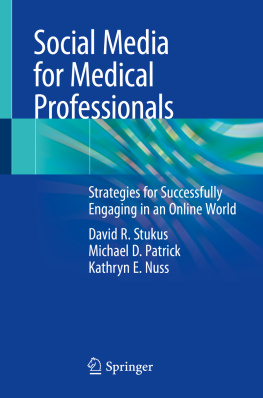
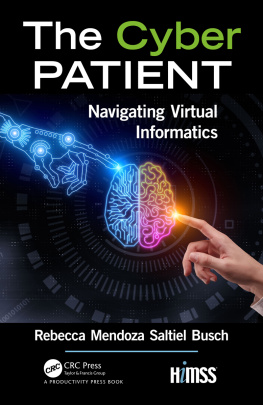
 The paper used in this publication meets the minimum requirements of American National Standard for Information SciencesPermanence of Paper for Printed Library Materials, ANSI/NISO Z39.48-1992.
The paper used in this publication meets the minimum requirements of American National Standard for Information SciencesPermanence of Paper for Printed Library Materials, ANSI/NISO Z39.48-1992.